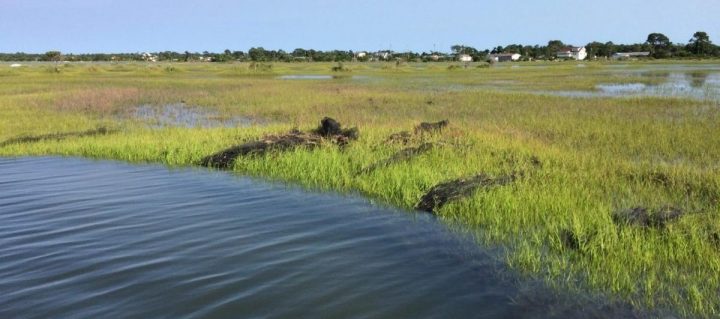
HARKERS ISLAND – Thanks to a grant from the National Oceanic and Atmospheric Administration’s Marine Debris Program, a contractor working for the North Carolina Coastal Federation will soon clean up debris left over from an abandoned aquaculture facility in the waters near Harkers Island in Carteret County.
The $129,041 project is to be paid for with $64,474 from NOAA and a $64,567 match from the federation and the contractor in the form of staff and volunteer work hours and services, respectively. NOAA and the federation announced the grant Tuesday.
Supporter Spotlight
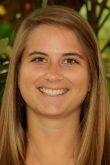
Bree Tillett, a coastal specialist for the federation, said the grant also will help fund development of best management practices, or BMPs, to help make sure that existing and future aquaculture operations don’t leave behind gear that can harm marine life or litter waters, posing threats to boats or swimmers.
The concept is to develop a consensus on BMPs for shellfish aquaculture marine debris disposal and prevention, and to incorporate these practices into North Carolina Sea Grant’s shellfish growers’ required class for leaseholders, Tillett said.
Partners in the grant include Sea Grant, NOAA and the Duke University Marine Laboratory.
Tillett said the debris has been there for years in West Mouth Bay, off Guthrie Drive on the “back” side of the island, and at one point encompassed about 30 acres of water.
What remains of the abandoned operation, she said, is mostly PVC pipes and plastic mesh netting, some of which has washed ashore and into the marsh along adjacent property. Some of it is in sea grass beds, which makes removal difficult because the beds are prime habitat for naturally occurring clams and oysters.
Supporter Spotlight
All told, the effort is supposed to remove 250 cubic meters, or 8,829 cubic feet, of debris from public trust bottom, and remove 600 pounds of shoreline debris, which has been there since the mid-1990s.
“We are looking forward to getting it cleaned up,” Tillett said, because the gear poses at least a slight threat not only to fish and wildlife, but also to those who might use the area recreationally. Tillett stressed that the goal of the project is not to cast aspersions on the aquaculture industry, which some people increasingly see as a big part of the future of the commercial fishing industry in the state.
In fact, she said, the whole project is forward-looking; a big component includes an effort to develop those BMPs, working with the aquaculture industry and North Carolina Sea Grant.
The federation is also involving “new science,” by working with the Marine Conservation Ecology Unmanned Systems Facility, the drone program headed by David Johnston at the Duke Lab on Pivers Island in Beaufort, which will photograph the conditions before the cleanup and after.
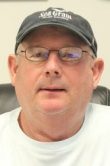
Chuck Weirich, a marine aquaculture specialist in Sea Grant’s office in Morehead City, welcomes the whole effort.
“Sea Grant is very supportive of this project,” he said. “It’s good work, a very proactive strategy.”
Weirich said he’s convinced that almost all who are involved in the relatively young but growing aquaculture industry in North Carolina are, and want to be, good environmental stewards, but conceded that as some projects develop and then some inevitably don’t make it, marine debris could become a problem in some cases.
“Right now, the industry is really very small and developing,” he said. “We here at Sea Grant believe in aquaculture, but we also see the need to ensure that those who are involved are good stewards. It’s something to keep an eye on in the future, and it will be good to see some guidelines developed. It’s important to avoid user conflicts and any other potential negative factors that could be associated with aquaculture.”
James Morris, an ecologist at the National Center for Coastal Ocean Science’s Center for Coastal Fisheries and Habitat Research at the NOAA lab in Beaufort, also supports the project.
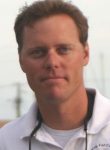
Although he’s best known for his research on lionfish, tiger shrimp and other invasive species in and near North Carolina waters, Morris’ work increasingly involves aquaculture, which NOAA has been pushing in recent years. Morris has publicly supported “good aquaculture” for some time, and has had a lease. In a paper way back in 2013, he reported on a study that evaluated the environmental effects of finfish aquaculture, including interactions with water quality, benthic habitats, or bottom of a body of water, and marine life across various farming practices and habitat types.
“We did this study because of concerns that putting marine finfish farms in the coastal ocean could have adverse effects on the environment,” Morris said then. “We found that, in cases where farms are appropriately sited and responsibly managed, impacts to the environment are minimal to non-existent.”
In the report, scientists, including Morris, said that “continued development of regional best-management practices and standardized protocols for environmental monitoring are key needs for aquaculture managers. As aquaculture development increases in the coastal ocean, the ability to forecast immediate or long-term environmental concerns will provide confidence to coastal managers and the public.”
Just a year or so ago, NOAA released an aquaculture plan, which its website says will guide efforts within NOAA Fisheries to support development of sustainable marine aquaculture from 2016-2020.
The plan, according to the website, “features four main goals: regulatory efficiency, science tools for sustainable management, technology development and transfer, and an informed public.” Other parts of the plan include strengthening partnerships, improving external communications, building infrastructure to support marine aquaculture and sound program management. The plan also sets a target of expanding sustainable U.S. marine aquaculture production by at least 50 percent by 2020.
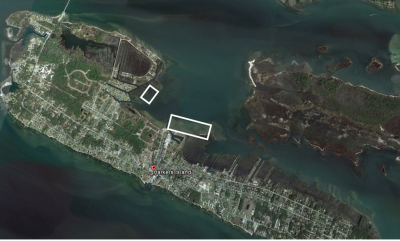
NOAA contends aquaculture is needed. “The U.S. imports over 90 percent of its seafood, about half of which is farmed,” the website states. “While aquaculture globally has grown dramatically over the past 30 years, in the U.S. production has remained low.”
Kathryn Sullivan, NOAA administrator at the time the plans were developed, is quoted on the website as saying that “aquaculture presents a tremendous opportunity not only to meet this demand, but also to increase opportunities for the seafood industry and job creation. Expanding U.S. aquaculture … complements wild harvest fisheries and supports our efforts to maintain sustainable fisheries and resilient oceans.”
As such, Morris said, it’s important that seafood farmers are good stewards, but also that others around realize that they are good stewards. And most, he said, are just that, because their very survival in the business depends upon clean waters.
He and Weirich agree that there are relatively few bad actors in the growing aquaculture industry, but it’s important the industry remains that way. There is still significant opposition to some projects, and any problems can exacerbate negative views.
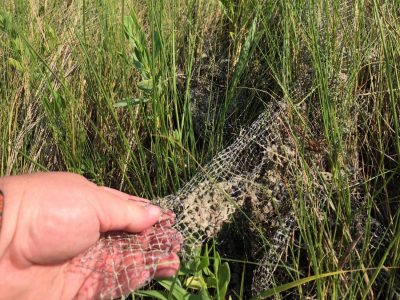
The BMPs, he said, can help develop a spirit of cooperation and respect among the “grower community” and those around them, and ensure that the mess left behind on Harkers Island is an isolated incident. The idea is for aquaculture in the state to grow in a sustainable way.
The cleanup itself, he said, provides a good opportunity for research, as those involved will be able to monitor the changes in habitat over time afterward.
Tillett, the federation coastal specialist, said there is also money in the grant to do some other marine debris habitat cleanup work not related to aquaculture, such as at Hoop Pole Creek in Atlantic Beach, where federation volunteers and staffers have worked many times.
Although it’s not a huge grant in terms of money, she said, a lot of good should come from it.
Steve Murphey, Habitat and Enhancement Section chief at the North Carolina Division of Marine Fisheries, agreed it will be a good thing to see the area cleaned up. The division, he said, has now included a clause in its lease agreement to make sure that happens, should a leaseholder abandon a project or have his or her permit revoked, but that doesn’t address any existing problems.
Murphey also welcomed the idea of working BMPs into Sea Grant’s educational material, because the more gear that is used in such operations, the more opportunities there are for problems, regardless of best intentions.








